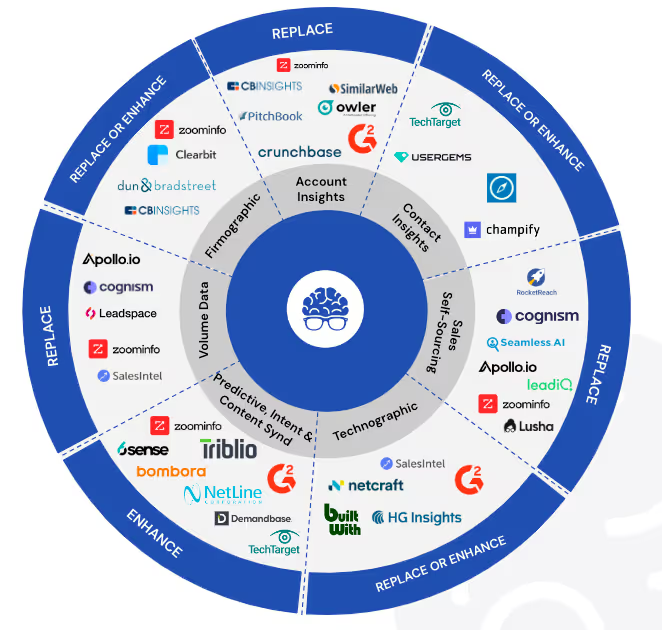Quickly dismissing that annoying cookie-consent pop-up every time you visit a website has become second nature to most of us now. But for marketers, there’s more to think about than just annoying pop-ups when it comes to cookies.
Gone are the days when we could rely on cookies to track user behavior and target them with personalized ads. With increasing concerns about privacy and evolving regulations, the cookie is crumbling, and marketers need to adapt to this new reality.
Understanding Cookieless Marketing
What Are Cookies?
Before we dive deep into this whole cookieless world, let's talk cookies. No, not the chocolate chip kind, but the digital ones.
In the online world, cookies are these tiny bits of data that websites quietly tuck away on your device. They're like the breadcrumbs of the internet, tracking where you've been, how long you've stayed, and what you've been clicking on.
Marketers, for a while now, have used these crumbs to cook up those ads that sometimes feel like they're reading your mind. But as people get more cautious about sharing their personal info and the rules of the game change, the days of having free rein with all this user data might be numbered.
Why Are Cookies Crumbling?
The decline of cookies has a lot to do with two main factors: privacy concerns and regulatory changes.
Privacy Concerns
We've all heard about those big data breaches and privacy scandals that have made us a bit twitchy about online tracking. People want to take the reins and have more say over their personal info, and they're not too thrilled about being followed around the web.
Regulatory Changes
Governments around the world have noticed these concerns and decided to step in. They've put out stricter data protection laws to keep things in check. The European Union's General Data Protection Regulation (GDPR) and California's Consumer Privacy Act (CCPA) are prime examples. These rules make it harder to collect and use cookies without getting a clear thumbs-up from users.

The Impact on Marketing
The decline of cookies has significant implications for marketers. Here are a few key consequences:
Reduced Targeting Precision
Without cookies, it's more challenging to track user behavior, collect personalized data, and deliver tailored ads. Marketers must find alternative ways to target their audiences effectively.
Increased Reliance on First-Party Data
In a cookieless world, first-party data, which is data collected directly from users, takes on greater significance. Marketers must encourage users to willingly share their information while maintaining transparency and ensuring they see value in doing so.
The Rise of Contextual Advertising
Contextual targeting and contextual advertising are on the rise. Instead of snooping on individual user data, this approach puts ads where they make sense within the content of a web page. It's all about showing relevant ads without invading users' privacy.
Navigating Cookieless Marketing
Now that we've got a handle on the challenges, let's dive into how you can smoothly navigate the cookieless marketing landscape.
Embrace First-Party Data
Think of first-party data as the treasure chest of cookieless marketing. It's the precious information you gather directly from your customers—their preferences, how they navigate your website, and their shopping history. By harnessing this data, you can create tailor-made experiences without relying on third-party cookies.
Picture a B2B conference call app company that's got a strong commitment to data privacy, all while making a real effort to get to know you better. They approach you on LinkedIn and organize a short video call to discuss what they can do for your company.
When you attend these virtual sales calls, their approachable representatives engage in friendly conversations, asking about your company's needs, what's bugging you in your industry, and how you prefer to stay in touch. It's like they're taking notes at an informative party, all to fuel their cookieless marketing strategy and serve you even better.
But they don't stop there; they take an extra step by incorporating a consent form into their enterprise meeting management software for client meetings. This ensures that the collection and use of your data are transparent and fully compliant with privacy regulations.

Build Transparency and Trust
Many users are more concerned about their privacy than ever, and building trust with your audience is a big deal. It's all about being upfront and straightforward about how you handle their data and giving them the power to decide what they do—or don't—share. Otherwise, your customers may go elsewhere, and low customer retention is bad news for any company looking for sustainable growth.
Take Amazon, for instance, the giant in e-commerce. They provide a privacy dashboard, essentially a control center for your data. It lets you see exactly what data Amazon has on you and gives you the power to customize your privacy settings.
But here's where Amazon really stands out. They don't just give you these controls and say, "Good luck!" No, they want you to feel in charge. You can decide what info you're comfortable sharing, and you can even opt out of some data collection if that's what you prefer. And Amazon doesn't just ask to collect your data for their benefit. They actually tell you how it can make your experience better.
Invest in Contextual Advertising
As cookies wane in popularity, contextual advertising is emerging as the new frontrunner. Rather than leaning on user data, this approach centers on inserting ads seamlessly into the content users are currently engaging with. It's a strategy that not only respects user privacy but also manages to serve up ads that are pertinent to the moment.
Say you’re looking online at articles about remote solutions for a Mac operating system. Then, you see an advert to “Download RealVNC's Mac remote desktop” appear online in a Mac support thread. This is contextual advertising. Contextual advertising algorithms can recognize the context of your browsing and deliver ads for relevant products or services
Free-to-use image sourced from Unsplash
A company looking to advertise Mac solutions can dive into online Mac enthusiast communities like forums and tech boards, placing seamlessly fitting ads to grab their target audience's attention. These ads emphasize their user-friendly and secure Mac-friendly software.
They also incorporate Mac-related keywords into their ads, ensuring they connect with users actively seeking Mac remote desktop solutions. These ads are all about addressing specific Mac-related remote desktop issues, offering the ultimate solution in a friendly, privacy-respecting way.
And that's the beauty of contextual advertising—it's like having a friendly chat with people who are already interested in what you've got to offer, all while respecting their privacy and what they're looking for.
Explore Advanced Technologies
In the cookieless era, thriving means embracing advanced technologies like artificial intelligence (AI) and machine learning. These powerful tools empower you to sift through extensive data sets, make highly accurate predictions about user behavior, and take your marketing efforts to the next level through precise audience segmentation.
Imagine a savvy domain registrar specializing in sought-after .ai domain registration. This business is fully tuned in to the fast-changing digital marketing scene and the challenges brought on by the fading importance of cookies. To not just survive but thrive in this evolving era, they've chosen to dive into the world of advanced tech.
They start using machine learning algorithms to predict what users will do next, all without needing cookies. AI keeps tabs on how users move around their website, spotting trends and figuring out what people really like. This helps them fine-tune their website layout, search functions, and even the recommendations they offer.
And the grand finale? Say hello to call center AI chatbots. When customers need help, they're there in a flash, offering real-time and personalized assistance to ensure their experience is smooth sailing from start to finish.

Collaborate and Adapt
The world of marketing rarely stands still, and if you want to stay ahead of the curve, you need to collaborate with your fellow marketers and keep your ear to the ground for what's new and exciting. And the real secret to success? You've got to stay adaptable as the marketing landscape does its never-ending dance of change.
Picture this scenario: an e-commerce business deeply rooted in digital marketing. They've been closely monitoring trends and acknowledging the decline of third-party cookies. To ensure compliance and effectiveness, they take action.
To stay ahead of the curve, they opt for a hybrid integration strategy. This approach seamlessly connects their e-commerce platform with various marketing tools, all without disrupting their existing systems.
When they spot trends like the surge in video content consumption on social media, they're quick to respond. Their flexible strategy enables them to effortlessly incorporate video marketing tools, resulting in engaging video content perfectly tailored to their audience.
And even without the convenience of personalization data through cookies, they refuse to compromise on customizing their customer outreach.
Their solution? They check out the best sales enablement tools, utilizing them to explore various personalization technologies like AI recommendation engines and chatbots.
Their ability to adapt and move with the times ensures they don't get left behind, consistently delivering successful marketing campaigns.
The Cookieless Future
Cookieless marketing isn't just a buzzword anymore; it's a fundamental shift that marketers need to embrace. The decline of cookies, driven by privacy concerns and regulatory changes, has fundamentally reshaped the digital marketing landscape and changed how we look at data.
The goal remains to deliver personalized experiences while respecting user privacy. By following these strategies and adapting to the changing environment, marketers can navigate the cookieless future successfully.
Ultimately, the most crucial aspect of cookieless marketing isn't the absence of cookies but the presence of creativity, innovation, and a commitment to delivering value to the audience.
So, prepare to adapt, collaborate, and lead the way into the exciting world of cookieless marketing. Your audience—and your brand—will appreciate it.
FAQs
How do marketers measure the effectiveness of contextual advertising compared to cookie-based targeting?
To measure the effectiveness of contextual advertising as compared to cookie-based targeting, marketers are increasingly relying on a blend of traditional and innovative metrics. While click-through rates (CTR) and conversion rates remain crucial, the focus shifts towards engagement metrics, such as time spent on page and interaction rates within the contextually relevant environment. Additionally, advanced analytics platforms are leveraging AI and machine learning to provide deeper insights into campaign performance, including sentiment analysis and the contextual relevance of the ad placements. These technologies enable marketers to assess not just the direct response to an ad but also its impact on brand perception and engagement within the targeted context. Compared to cookie-based metrics, these approaches offer a broader understanding of an ad's effectiveness in capturing and retaining audience interest in a privacy-conscious manner.
What specific strategies can marketers use to encourage users to share first-party data willingly?
To encourage users to share first-party data willingly, marketers are adopting a variety of strategies centered around transparency, value exchange, and user control. Successful tactics include clear and concise privacy notices that explain the benefits of data sharing, such as personalized experiences or rewards. Offering incentives, such as exclusive content, discounts, or loyalty points, in exchange for data sharing can also motivate users. Importantly, providing users with easy-to-use privacy controls and the ability to opt-in or out of data collection fosters trust and demonstrates respect for user privacy. Case studies from companies that have implemented these strategies successfully often highlight increased user engagement and higher data quality, as users who choose to share their data are typically more interested in the brand's offerings.
How are regulatory changes expected to evolve, and what impact will this have on cookieless marketing strategies?
Regarding the evolution of regulatory changes and their impact on cookieless marketing strategies, it's expected that privacy regulations will continue to tighten globally, extending beyond the GDPR and CCPA to include more regions and potentially more stringent requirements. Marketers should stay informed about legislative developments and prepare for these changes by prioritizing flexibility in their marketing technologies and strategies. This includes investing in platforms that offer robust privacy features, developing stronger relationships with customers through direct engagement channels, and enhancing the use of AI to analyze behavioral data without infringing on privacy. By anticipating regulatory shifts and adapting strategies accordingly, marketers can not only ensure compliance but also seize the opportunity to innovate in how they engage with their audiences in a cookieless future.




